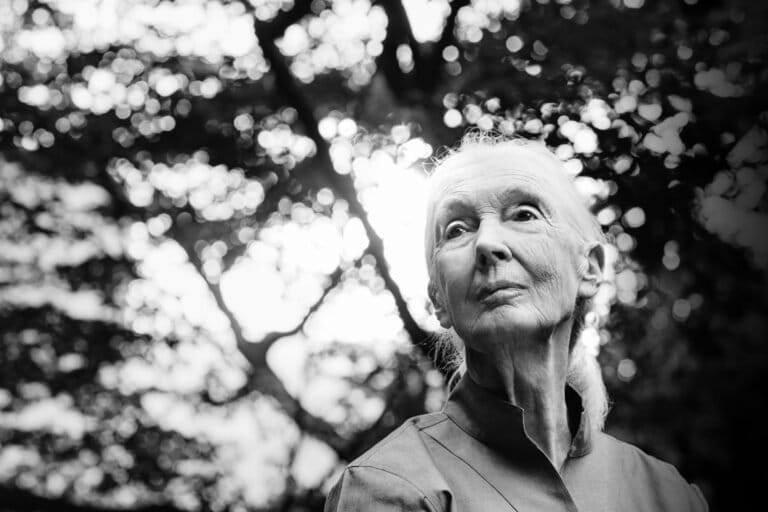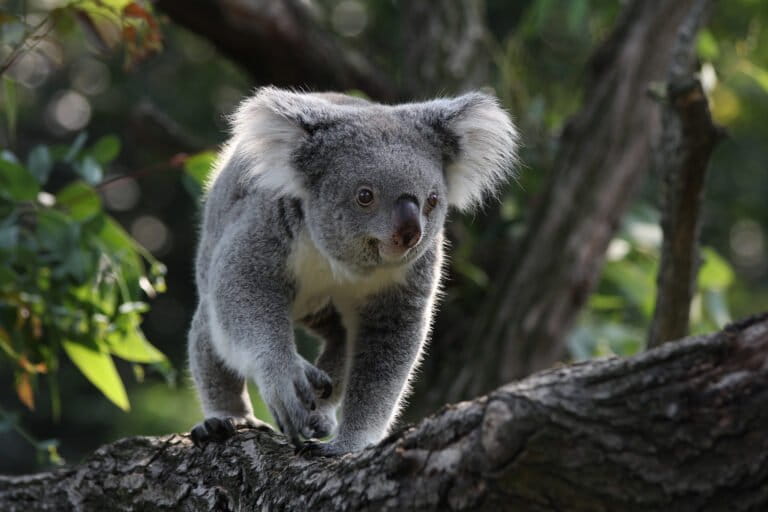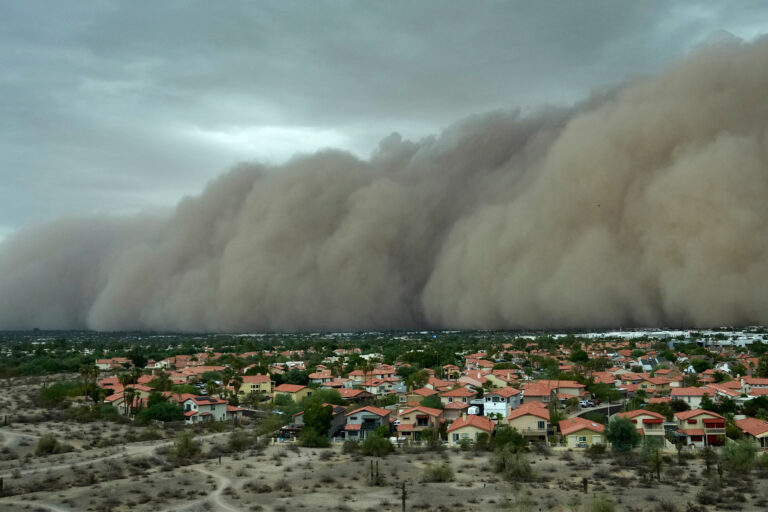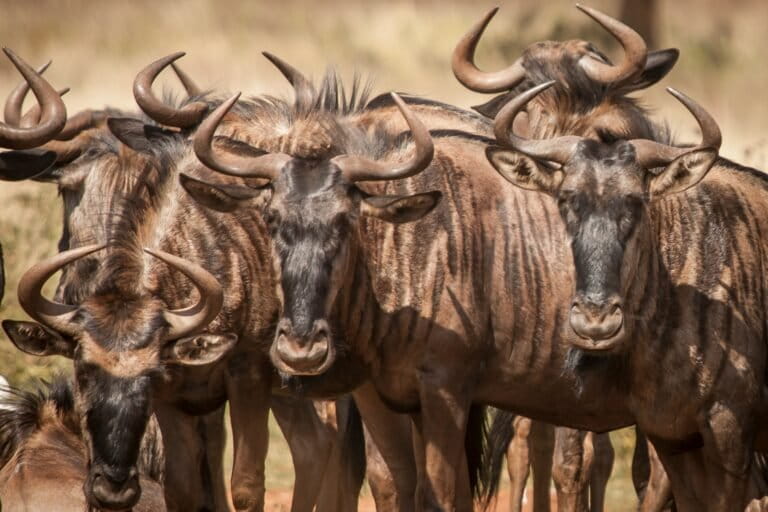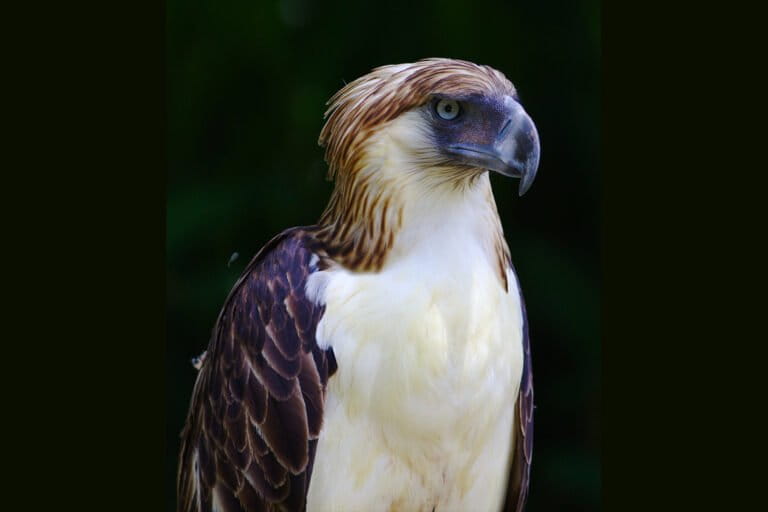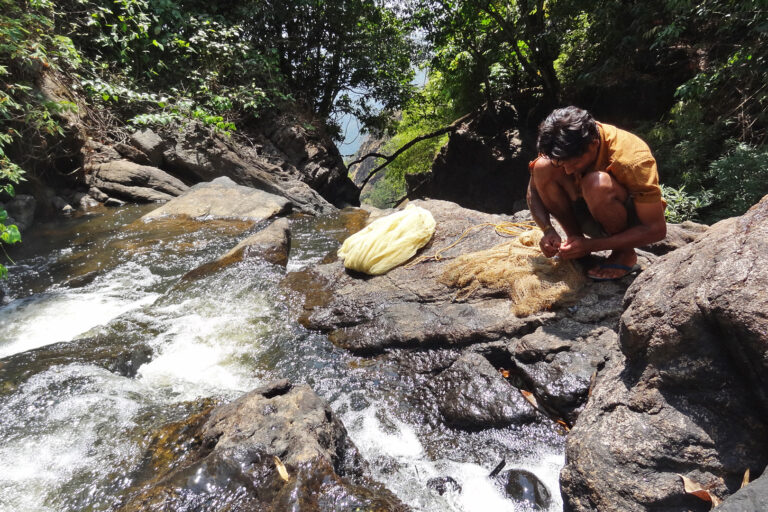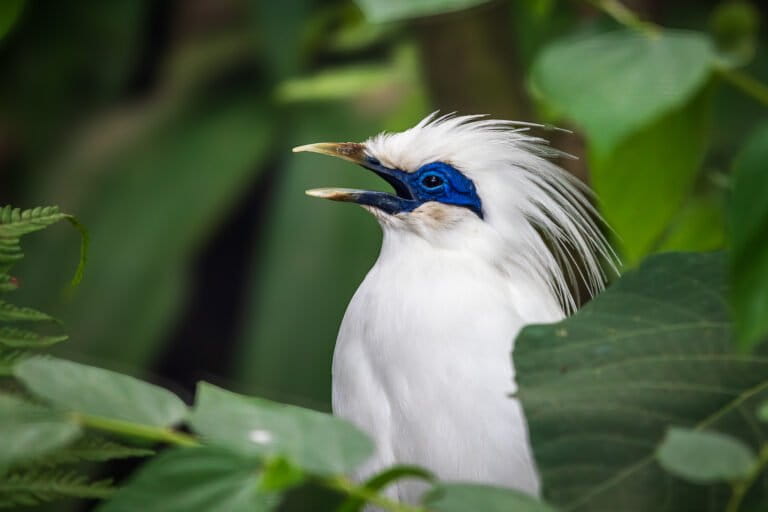- After 140 years, a lost-to-science pigeon subspecies has been spotted once again on Fergusson Island, off eastern Papua New Guinea.
- After following tips from a local hunter, researchers photographed the black-naped pheasant-pigeon, a large, ground-dwelling bird, for the first time using a remote camera trap.
- Ornithologists believe the pheasant-pigeon is extremely rare and these forests on Fergusson island in the D’Entrecasteaux Archipelago could likely be the only place they exist.
- The expedition was part of the Search for Lost Birds program, a collaboration between BirdLife International, the American Bird Conservancy, and Re:wild.
After 140 years, a pigeon subspecies lost to science has been found again on Fergusson Island off eastern Papua New Guinea. Using a remote camera trap, researchers photographed the black-naped pheasant-pigeon (Otidiphaps nobilis insularis), a large, ground-dwelling bird, for the first time since it was described in 1883.
“After a month of searching, seeing those first photos of the pheasant-pigeon felt like finding a unicorn,” said John C. Mittermeier, director of the lost birds program at the American Bird Conservancy and co-leader of the expedition. “It is the kind of moment you dream about your entire life as a conservationist and bird-watcher.”
A black-naped pheasant-pigeon caught on camera. Video: Jason Gregg / American Bird Conservancy
In September 2022, the expedition team, which included local Papua New Guineans working with Papua New Guinea National Museum, Cornell Lab of Ornithology and the American Bird Conservancy, spent a month interviewing locals and finding promising locations to install their hidden camera traps. Fergusson Island’s steep, mountainous terrain and dense forests added to the challenge.
“It wasn’t until we reached villages on the western slope of Mt. Kilkerran that we started meeting hunters who had seen and heard the pheasant-pigeon,” Jason Gregg, conservation biologist and a co-leader of the expedition team, said in a statement. “We became more confident about the local name of the bird, which is ‘Auwo,’ and felt like we were getting closer to the core habitat of where the black-naped pheasant-pigeon lives.”
A local hunter, Augustin Gregory, told the team he had seen and heard the birds. His tip led them to a ridge 1,000 meters (3,200 feet) near the Kwama River above Duda Ununa. Here, the cameras snapped a photo of the black-naped pheasant-pigeon walking along the forest floor just two days before the expedition was due to end.

“When we collected the camera traps, I figured there was less than a one percent chance of getting a photo of the black-naped pheasant-pigeon,” Jordan Boersma, a postdoctoral researcher at Cornell Lab of Ornithology and co-leader of the expedition team, said in a statement. “Then as I was scrolling through the photos, I was stunned by this photo of this bird walking right past our camera.”
The expedition was part of the Search for Lost Birds, a collaboration between BirdLife International, the American Bird Conservancy, and Re:wild. Last year, the Search for Lost Birds found a Santa Marta sabrewing hummingbird in the Santa Marta mountains of Colombia. Prior to the expedition, the critically endangered hummingbird was considered extinct and had not been spotted since 2010.
Ornithologists believe the pheasant-pigeon is extremely rare and these forests on Fergusson island in the D’Entrecasteaux Archipelago could likely be the only place they exist. The birds face threats from habitat loss, mostly via logging by international corporations and predation by feral cats. The scientists say they hope this finding will spur conservation action for the black-naped pheasant-pigeon that will also benefit the other animals and plants on the island.
“As well as giving hope for searches for other lost species,” said Roger Safford, senior program manager for preventing extinctions at BirdLife International, “the detailed information collected by the team has provided a basis for conservation of this extremely rare bird.”
Banner image: Black-naped Pheasant-Pigeon. Photo: Doka Nason/American Bird Conservancy
Liz Kimbrough is a staff writer for Mongabay. Find her on Twitter @lizkimbrough
FEEDBACK: Use this form to send a message to the author of this post. If you want to post a public comment, you can do that at the bottom of the page.







